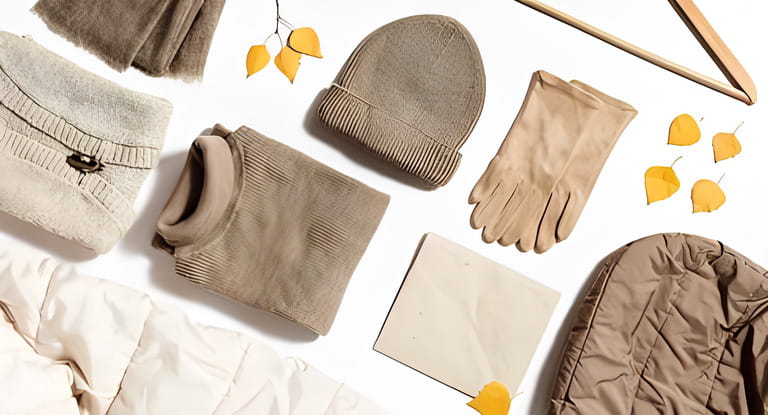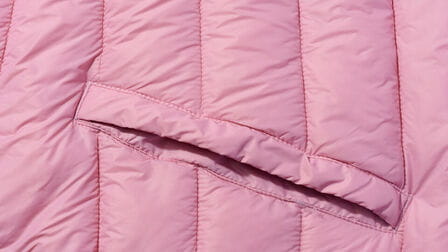Staying warm in cold weather is essential for your health and comfort. The right clothing can make all the difference in how well you're able to withstand the cold and even help you prevent health problems like hypothermia. This article provides an in-depth look at the types of clothing that will keep you the warmest in cold weather conditions.
Factors to Consider When Choosing Warm Clothing
When choosing clothing to keep you warm, there are several key factors to consider:
Insulation
Insulation is the key to keeping your body heat in and the cold air out. Look for clothing made with materials that are good insulators, such as:
- Down - Down is the soft, fluffy undercoating found on ducks and geese. It traps air extremely well to provide excellent insulation. High quality down clothing can keep you very warm even in frigid temperatures.
- Wool - Wool naturally retains heat and insulates even when wet. Merino wool is exceptionally soft and comfortable against skin. Look for sweaters, socks, and base layers made of wool.
- Synthetics - Synthetic insulations like polyester fleece and PrimaLoft are lightweight, breathable, and effective at trapping heat. They continue working even when wet. Synthetics are also less expensive than down.

Layers
Layering clothing is one of the most effective ways to stay warm:
- Base layer - This wicks moisture away from your skin to keep you dry. Silk, merino wool, and synthetic materials work best.
- Middle layer - This is your primary insulating later, often a sweater or fleece. Trap body heat without being too bulky.
- Outer layer - Protects from wind, rain, and snow with waterproof and windproof materials like GoreTex. Lets perspiration escape.
Having multiple lightweight layers allows better temperature regulation than one thick layer. You can shed layers to prevent overheating while still staying warm.
Fit
The fit of cold weather clothing affects its warming capability:
- Not too tight - Restricting blood flow prevents body heat from reaching your extremities. Tight clothing also reduces the insulating layer of trapped air.
- Not too loose - Loosely fitting layers allow more cold air in and let your natural body heat escape. The best fit is slim but allows moving comfortably.
The ideal fit balances insulation with breathability and unrestricted movement. Make sure nothing pulls tightly across your chest when you move your arms.
Coverage
Make sure your winter clothing adequately covers all exposed areas:
- Head - Up to 50% of body heat can be lost through an uncovered head. Wearing hats, ear warmers, and hoods are essential.
- Hands and wrists - Your hands easily get cold when exposed directly to the elements. Wear proper winter gloves that seal out wind and snow.
- Neck - An uncovered neck allows cold air to penetrate your upper body. Wear turtlenecks, scarves, balaclavas, or shirts with tall collars.
- Feet - Extremely vulnerable to frostbite, your feet need insulated and waterproof boots high enough to cover ankles. Wear thick wool socks.
Letting any skin be exposed to the cold increases risk of frostbite and hypothermia. Seal off all gaps.
Clothing Materials That Keep You Warmest
The following materials have outstanding insulating properties to keep you warm:
Down
Down refers to the layer of fine, fluffy feathers found under the tougher exterior feathers of ducks and geese. It is prized for its unequaled ability to trap air and provide very effective insulation:
- Down clusters tightly together when compressed, creating millions of tiny air pockets that prevent heat loss. It can insulate even when wet.
- High quality down is extremely durable, maintaining loft and insulation for many years with proper care.
- Down is the warmest insulating material gram for gram, although it can be expensive. It's ideal for very cold and dry environments.
- Look for a high "fill power" of at least 600. This measures the loft and quality of the down.
Down works best when dry. It loses some insulating value if exposed to moisture over time. However, high-tech water-resistant down treatments are now available.
Wool
Wool has many properties that make it excellent for keeping warm in winter:
- Wool fabric allows skin moisture to pass through while preventing cold external moisture from getting in. This helps maintain comfortable skin temperature.
- Even when wet, wool still provides significant insulation as the fabric's structure traps air pockets.
- The crimped fibers of wool create tiny air pockets that trap heat extremely well. Merino wool is especially soft and insulating.
- Wool continues insulating when compressed. It's also durable, stretchy, resists odors, and maintains shape over time.
Look for wool clothing, socks, base layers, and sweaters to stay warm through winter adventures. Merino wool is less scratchy.
Synthetic Insulation
Modern synthetic insulations have many advantages:
- Materials like PrimaLoft, Polartec, and polyester fleece provide outstanding warmth for their weight. They insulate even in wet weather.
- Synthetics are highly breathable, wicking moisture while retaining loft and trapped air to prevent heat loss.
- They dry quickly when wet and are easy to clean and care for. Many are water and wind resistant.
- Insulated synthetic fabrics are relatively inexpensive while providing warming properties on par with down in some cases. Varieties like PrimaLoft even mimic down.
Look for synthetic fills and fleece in insulating jackets, coats, gloves, hats, pants, and long underwear. Synthetics make winter clothing affordable and versatile.
How to Stay Warm in Extreme Cold Weather
If you'll be spending long periods of time outdoors in bitter cold and wind, special precautions are necessary:
Dress in Multiple Layers
Layering clothing is essential to retain body heat in extreme cold:
- Start with silk or synthetic long underwear, which wicks moisture from skin
- Add an insulating middle layer like fleece or wool
- Top with a padded, hooded parka able to block wind and seal in warmth
- Always wear insulated, waterproof boots and thick wool socks
Having multiple layers allows removing or adding as needed to prevent overheating or chilling.
Cover all Exposed Skin
Don't leave any skin vulnerable to the air in extreme cold:
- Wear insulated, waterproof gloves and mittens, with glove liners if necessary
- Wear hats, hoods, scarves, face masks, and neck gaiters to protect the head
- Seal gaps at wrists, waist, ankles, knees, etc. with insulating and wind-blocking garments
Losing body heat from exposed skin can quickly lead to frostbite.
Take Regular Warm-up Breaks
If working hard in sub-zero temperatures:
- Come inside to warm up every 20-30 minutes
- Remove outer layers and replace sweat-dampened garments
- Drink something hot and get blood circulating again
Extended exposure to extreme cold coupled with sweat-dampened clothing causes rapid heat loss. Regular breaks are essential.
Health Risks of Cold Exposure
Exposure to cold weather can cause serious medical issues including:
Hypothermia
- Occurs when body loses more heat than it can produce
- Causes shivering, drowsiness, confusion, slurred speech
- Requires immediate medical treatment
- Can be fatal if body temperature drops too low
Frostbite
- Tissue damage from skin/tissue freezing
- Causes numbness, tingling, blistering
- Requires rapid warming to prevent tissue death
- Can result in amputation of affected area
Chilblains
- Itchy, inflamed skin lesions
- Caused by exposure to cold and humidity
- Usually affects hands and feet
- Repeated exposure can permanently damage skin
Wearing improper clothing for cold temperatures quickly increases risks of these dangerous medical conditions. Stay vigilant about keeping warm.
Conclusion
Having the proper insulating and protective winter clothing makes all the difference in safely enjoying cold weather activities. Key factors include choosing materials that trap heat, wearing multiple layers, keeping skin covered, and taking precautions in extreme cold. Following these clothing guidelines helps ensure you stay warm and avoid dangerous health risks like hypothermia and frostbite when the temperatures drop. Don't take staying warm for granted.













